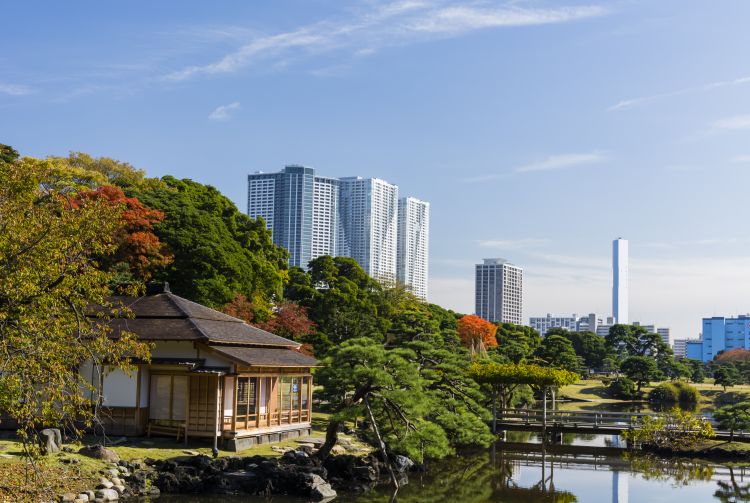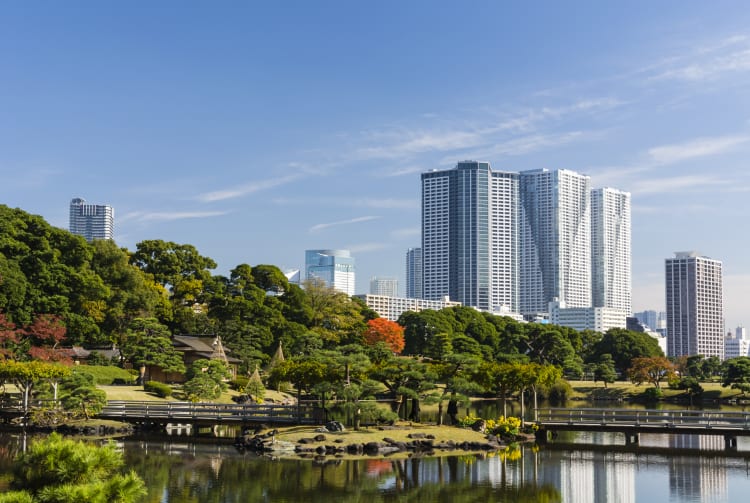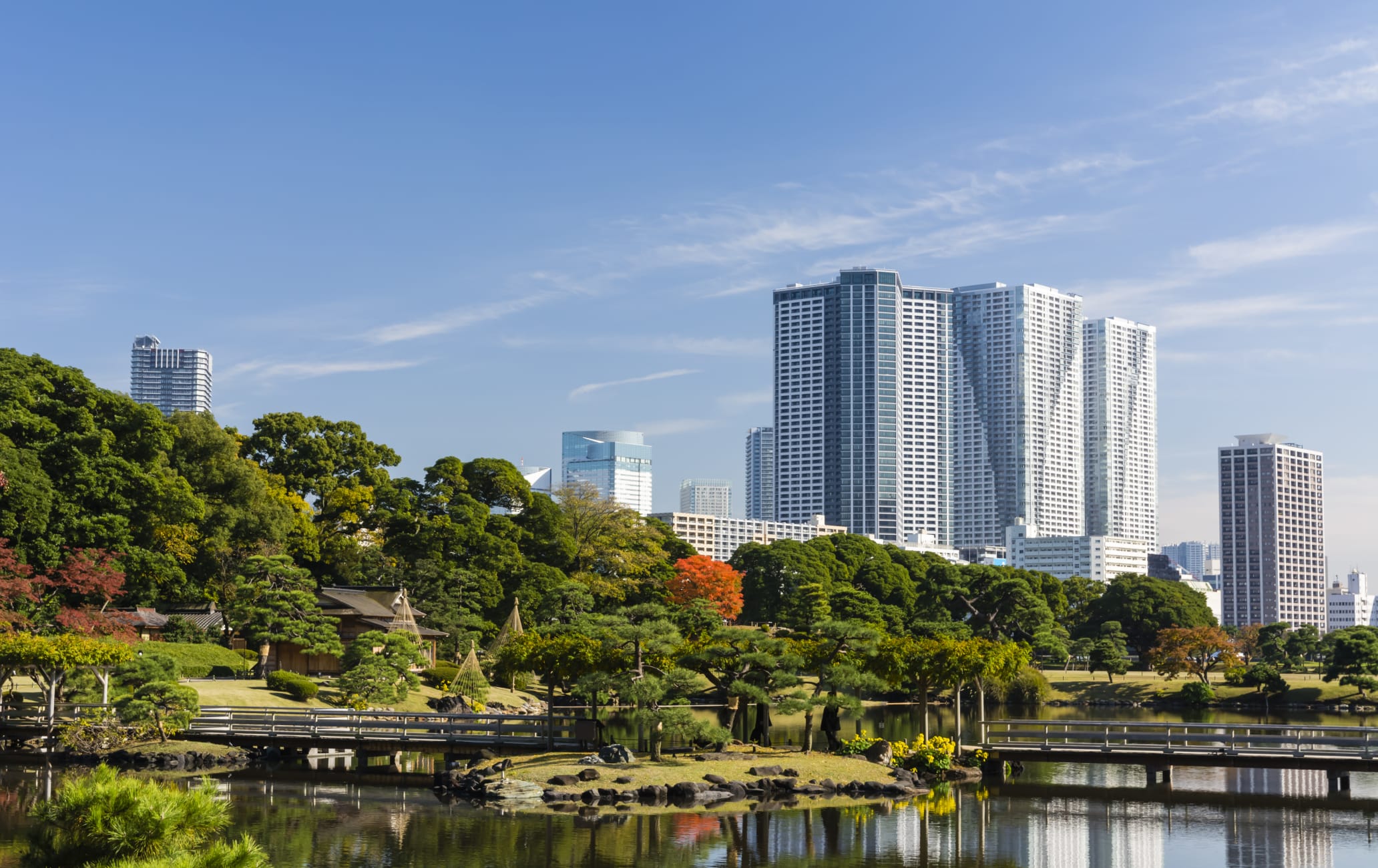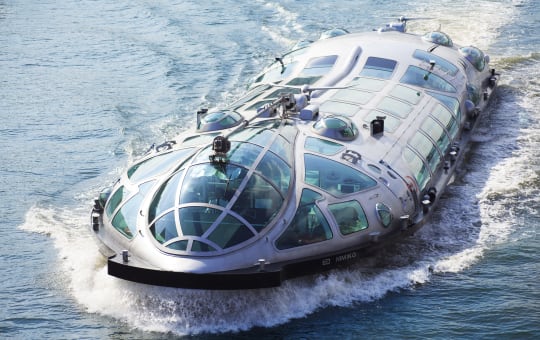These former imperial and shogunate gardens are a lesser-known oasis in the middle of the metropolis
Maintaining a natural, green space among the gleaming, high-rise buildings of nearby Shiodome , Hama-rikyu Gardens are a bastion of calm in the heart of downtown Tokyo. These scenic gardens, once reserved for Imperial use only, were opened to the public in 1946.
When you visit these gardens, leave time for traditional refreshment in the floating teahouse, a quintessential Japanese experience, and consider departing via waterbus.
Don't Miss
- The only seawater pond left in a garden from the Edo period in Tokyo
- Matcha green tea and traditional sweets served in the Nakajima-no-ochaya (teahouse)
- Strolling the 120-meter bridge that connects the gardens' islands
How to Get There
You can access the gardens via a 12-minute walk from Shimbashi Station.
Alternatively, the gardens are a 7-minute walk from Shiodome Station on the Oedo Subway Line or Yurikamome Line.
The gardens are a stop for the waterbus run by Tokyo Cruise Ship Co., Ltd. The Sumida River Line waterbus runs from Asakusa to the gardens, and the 35-minute trip makes a refreshing change to the subway. The entrance fee to the grounds is included in the fare. You can also travel back to Asakusa via the gardens' Hinode Pier.
Many aspects of the gardens
While you relax in the gardens' natural beauty, there are many points of interest for you to explore. Near the entrance is an impressive 300-year-old pine tree very carefully pruned over the centuries into an impressive weeping expanse, and beyond that are flower fields which offer nearly year-round blooms including vibrant peonies, colza, and cosmos.
The gardens have two duck hunting grounds that were used by the Shogun, and there is a memorial built to commemorate and console the spirits of the ducks that have been caught in the grounds. You can still see traditional duck blinds from behind which the ducks were shot scattered throughout Hama-rikyu.


Beautiful seasonal blossoms and foliage
Compared to some of Tokyo's other gardens, Hama-rikyu is not known for its spring blossoms and autumn foliage. However, from late February to early April you can view blossoms, as the gardens still house an abundance of plum and cherry blossom trees blooming in pink and white during spring. The same is true in the autumn, as the maple and ginkgo trees illuminate the garden in dazzling reds and yellows.


A small sea
The gardens' central pond, Shioiri-no-ike, is more than it seems. With its Japanese name translating to "tidal pond," the pond is actually filled with seawater drawn in from Tokyo Bay. Sluice gates are used to regulate the water level by working with the rise and fall of the tide, so the pond changes throughout the day. Make sure to look into the pond when you visit as you may catch a glimpse of the marine life brought in from the sea, including sea bass and black mullet.
Appearing to float on the pond is the teahouse. Here, sitting in these traditional surroundings on the tatami mats, you can enjoy a relaxing cup of powdered green tea served with an authentic wagashi sweet. If you don't have time for tea, the atmosphere alone provides a rewarding experience.


After the gardens
Due to its location along the Tokyo Waterbus Line, Hama-rikyu makes for a great stop between a visit to Asakusa's traditional temples and Odaiba's ultra-modern entertainment. Traveling the city this way is a lovely, scenic alternative to the underground subway lines.


























































